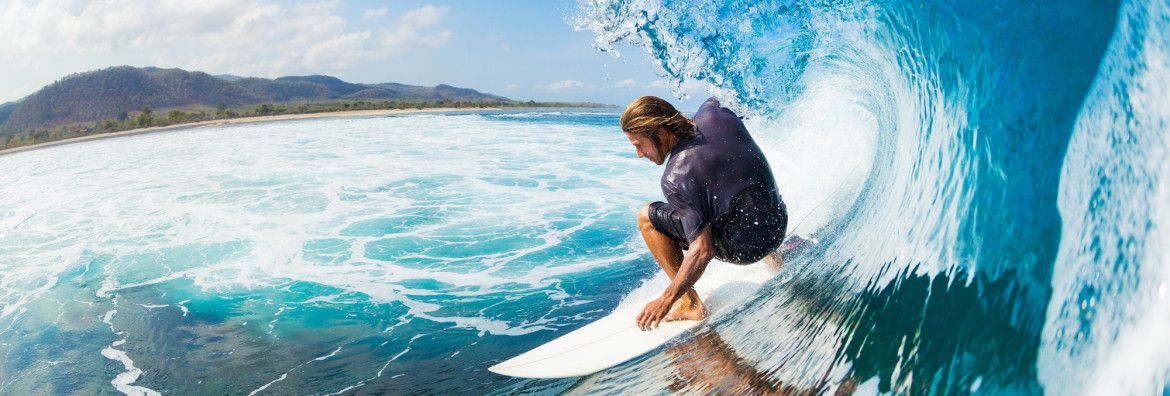
Preventing Injuries: What Surfers May Not Know
Feeling sore after getting out of the water? It may not be entirely obvious that you may be developing an injury somewhere in your body. Feeling any type of tightness or nagging aches in your shoulders or knees may mean that you’re not moving correctly when you’re on the water. Most surfing-related injuries could be prevented by knowing how to better engage certain parts of your body. Surf injuries lead to a progressive downgrade of a surfer’s performance since those aches and pains get in the way of how well you surf.
If you do feel some aches after getting out of the water, you may need some help with how you move. You may not have known how to use certain muscles to allow you to get the most out of your surf routine.
Don’t Cheat By Rotating Through The Knees
Surfing requires significant range of motion and stability across many major joints. Many surfers start developing injuries when they get stuck in a specific movement pattern. To start with, knees can take a beating when surfing. If your knees are feeling sore, you’re not going to produce as powerful of turns. As a surfer, it’s critical to have a healthy knee joint and quality strength throughout the muscles of the legs and hips. When surfing, your knee can get into some awkward or unnatural positions that put too much strain on your knee joints. Relying on just your knees to produce the force you need to make those turns can cause pain in your knee joint. These issues could range from damage to the cartilage, ligaments, and tendons around your knee joint to having your knee joint start to misalign.
Activate Above Your Knees
Consider moving throughout your entire body as you cut and turn through the waves. One solution to help your knees out would be to rotate through your shoulders and trunk (i.e. chest and ribcage). Flowing from turn to turn involves leading with your shoulder and hips. When leading into a really tight turn, it’s especially helpful to utilize your hips. Getting low and staying balanced while tube riding also requires a lot of hip, knee, and ankle flexibility and strength. Surfing creates tight hip flexors (i.e. muscles surrounding your hips) because straddling the board keeps those muscles contracted for long periods of time. Having tight hips can restrict how well you rotate during a turn. When this happens, it goes back to that knee pain. You’ll compensate for the force needed to turn by using your knees, which will strain them. Better hip flexibility and strength can also help with the fundamental squat position, you’ll see better stability and more lower body control while you’re out there surfing.
Those Achy, Creaking Shoulders
Surfer’s also have a high risk for overusing and putting too much strain on their shoulders. When surfing, you’re constantly pulling your shoulders forward in the water. Over time, this becomes a habit and you begin stretching and irritating the muscles around your shoulder. Paddling also strengthens certain muscles in the shoulder while weakening the rotator cuff muscles (i.e. muscles around upper arm and top of shoulder). This leads to a type of injury called shoulder impingement, which occurs when you constantly compress the rotator cuff tendons of your shoulder with a lot of overhead movement (i.e. paddling). Strengthening the muscles that surround the back of your shoulder will take the stress off of those overused muscles in the front. Working on balancing the pressure across your shoulder muscles will prevent any inflammation or pain that may come from having your shoulder impinged. Paddling also takes a lot of power and flexibility coming from your back and core. If you consider how your entire body moves when you paddle, you’ll put less stress on certain parts of your body and begin to utilize major muscle groups.
Surf With Your Whole Body
While some moves may require the use of certain muscles more than others, it’s important to have strength and flexibility across your body. Surfing is as dynamic of a sport as it gets—moving on open water is anything but simple. Your body has to punch back against the force of the waves while also moving well. Each wave will have an effect on your board and ultimately on your body. Working through your movements and figuring out the cause of your pain will help you move your best—and surf your best.
Common Surf Injuries, Joint Pain, Knee Pain, Preventing Surf Injuries, Shoulder Pain, surfing, Surfing Form, Surfing Pain, Surfing Tips